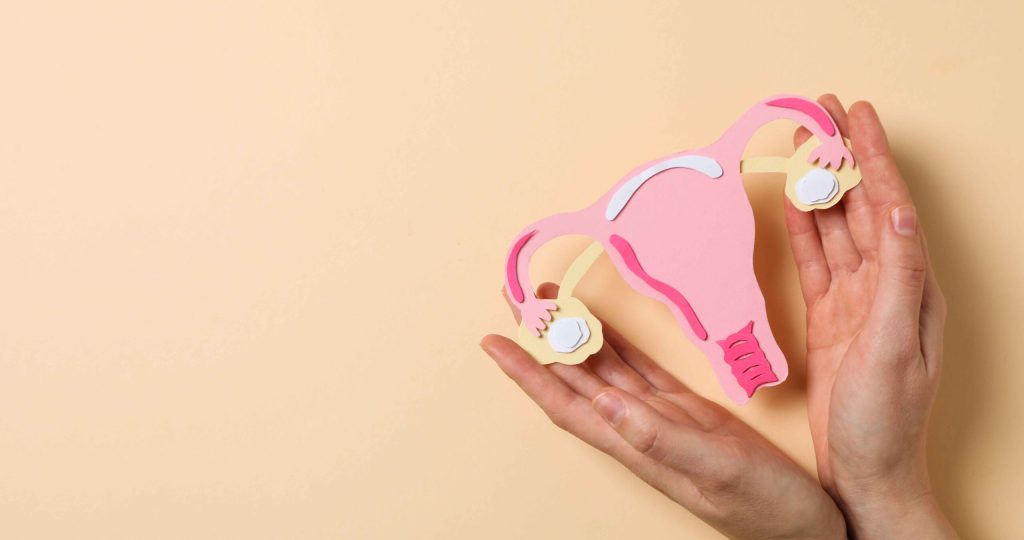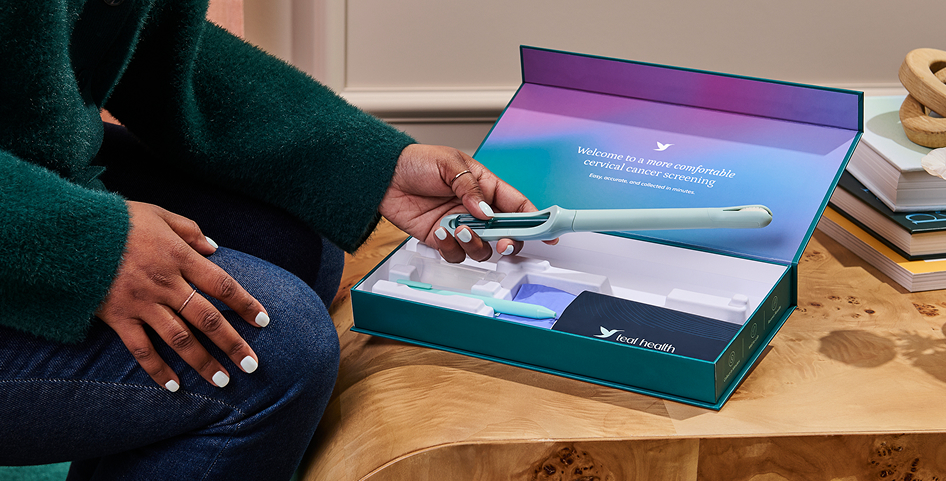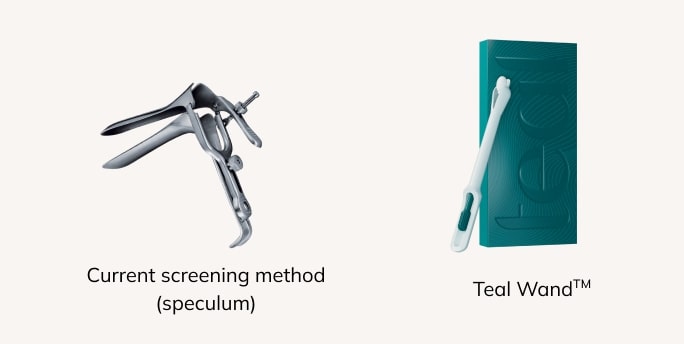Written by: Priya Bhaware M.Pharm (Pharmacology)

On May 9, 2025, the U.S. Food and Drug Administration (FDA) approved the Teal Wand medical device. Teal Health, the first FDA-authorized at-home cervical cancer screening device in the United States, developed Teal Wand. This innovative medical tool empowers women to self-collect vaginal samples for human papillomavirus (HPV) testing, which is the primary cause of cervical cancer.
The Teal Wand Device is the direct replacement of the traditional Pap smear test. By offering a more private, comfortable, and accessible alternative to traditional in-clinic Pap smears, the Teal Wand has the potential to radically improve early detection rates. It also encourages more women to participate in routine cervical cancer screening, especially those women who face barriers to in-person care.
As per Teal Health, they are working hard to roll out the product, with initial distribution set to begin in June 2025 in California first. Nationwide expansion is planned to follow soon thereafter, as the company aims to increase accessibility and convenience for women across the country. This FDA approval is seen as a transformative step toward modernizing women’s healthcare and reducing preventable deaths from cervical cancer.
Background and Need for New Treatments
Cervical cancer is the third most common cancer among women in the United States. The physiology of disease typically develops as a result of persistent infection with high-risk types of human papillomavirus (HPV), most notably the HPV-16 and HPV-18 variants. The virus enters into the basal epithelial cells of the cervix through microscopic abrasions, where it expresses oncogenic proteins E6 and E7. These proteins inactivate crucial tumor suppressor pathways, p53 and retinoblastoma (Rb), leading to loss of cell cycle control. This disruption promotes genomic instability, setting the stage for the development of cervical intraepithelial neoplasia (CIN), which can progress to invasive cervical cancer if not identified and managed early.
In the U.S., over 20 million women are currently overdue for their cervical cancer screenings. Common obstacles include limited time, demanding work, childcare responsibilities, and financial constraints. Many individuals also avoid screenings due to fear, discomfort, or pain associated with the traditional clinic-based speculum exam. For some, especially those with a history of sexual trauma, the experience can be particularly distressing. This includes the estimated 1 in 4 women who have experienced sexual assault or childhood abuse, as well as individuals who are transgender. For these groups, the standard screening process can feel invasive and create a barrier to essential preventive care.
Traditional cervical cancer screening tools, including Pap smears and physician-collected HPV tests, are effective enough; however, these tools are alleged to involve a small surgery-like procedure, are uncomfortable, and require in-person clinical appointments, which can discourage participation, particularly among underserved or timid patients. In contrast, the Teal Wand offers an at-home alternative that is non-invasive, private, and user-friendly. Another reason was that the younger women are being diagnosed with cervical cancer more often, which requires immediate early detection and treatment. This alarming situation needs correction immediately. By making screening more accessible and less intimidating, the Teal Wand has the potential to increase early detection rates, improve screening adherence, and ultimately reduce the burden of cervical cancer across the country.
Teal Wand: A Novel Approach

Teal Health is a women’s healthcare company based in San Francisco that has developed the Teal Wand, a pioneering at-home cervical cancer screening device that allows women to self-collect vaginal samples for human papillomavirus testing. Teal Wand is designed as per FDA-approved standards. The Teal Wand offers a private, convenient, and clinically validated alternative to traditional in-clinic procedures. To carry out the collection of the sample at home with the help of the teal wand, patients can follow the following steps:
Request kit: Requesting a Teal Wand collection kit at-home order. Once confirmed, the kit will be directly shipped to the address.
Collect your sample & mail it to the lab: Once the kit is received, collect the sample from the comfort of your home. Once done, seal the sample and send it to the lab for further testing.
Processed at CLIA-certified labs: The sample will be collected at CLIA-certified labs, analyzed with an FDA-approved primary HPV test, and the results on the Teal Wand portal.
Clinical trial—the SELF-CERV Study
The FDA approval of Teal Wand comes after the extensive nationwide clinical trial called the SELF-CERV nonrandomized clinical trial (ClinicalTrials.gov ID: NCT06120205) conducted by Teal Health to validate the performance of Teal Wand. This study aimed to compare the effectiveness of self-collected vaginal samples (SC) using the Teal Wand with clinician-collected (CC) cervical samples collected using a speculum and brush for detecting high-risk human papillomavirus (hrHPV).
The 609 eligible participants aged between 25 to 65 years of age were recruited from 16 different sites in the USA with an intact cervix. Exclusion criteria included pregnancy, vaginal bleeding, and a cervical alteration in the prior 5 months.

Procedure for the collection of a sample using a teal wand during trial
Participants conducted self-collection (SC) in a private space designed to simulate an at-home environment. Following the provided instructions, they inserted the device into the vagina, extended the collection sponge using the dial, rotated it ten times, and then removed the device. After collection, the sponge was detached and placed into an empty vial.
For method comparison, a clinician subsequently collected a cervical sample using a Rovers Cervex-Brush, which was deposited into a 20-mL PreservCyt vial. Both self-collected and clinician-collected (CC) samples were sent to a designated laboratory for analysis.
Self-collected samples were stored dry in their vials for up to nine days. Before processing, a lab technician eluted each sponge into 20 mL of PreservCyt solution. All samples were then analyzed using the Roche cobas high-risk HPV test on the Roche cobas 8800 System.
Results
Out of total 609 eligible participants 599 paired SC-CC samples (262 aged 30-39 years [43.7%]; 583 identified as female [97.3%]) were scrutinized. 362 individuals (59.4%) were recruited from a high-risk HPV-enriched population, while the remaining 247 participants (40.6%) were enrolled from the general cervical cancer screening population.
The SC method showed 95.2% agreement with CC method in detecting high-risk HPV and 95.8% sensitivity for detecting high-grade cervical dysplasia, matching CC performance. Most participants (over 92%) found the instructions easy and said they would prefer SC if results were comparable to CC. The study found that the SC device was a safe and accurate option for cervical screening suitable for at-home use. The intersection of increased health autonomy and highly sensitive diagnostic tools make this an optimal time to implement at-home SC cervical cancer screening in the US, thereby improving access and accelerating progress toward cervical cancer elimination.
Safety Profile
Clinicians visually examined the cervix and vagina after both self-collection (SC) and clinician collection (CC). All observed events were expected and mostly mild, typically linked to CC or later procedures like colposcopy or biopsy. Only 2 of 602 participants (0.3%) experienced mild issues directly related to the SC device: one minor cervical abrasion and one case of spotting (not confirmed on exam). Mild spotting or bleeding from either method was reported in 0.5% of participants (3 of 602).
Conclusion
The U.S. Food and Drug Administration’s approval of the Teal Wand represents a pioneering landmark in the evolution of cervical cancer screening. As the first FDA-authorized at-home self-collection device for HPV testing, the Teal Wand introduces a new era of accessibility, sovereignty, and innovation in women’s healthcare.
The teal wand is backed by clinical evidence demonstrating safety and diagnostic accuracy comparable to traditional clinician-collected methods. The device empowers women to take charge of their reproductive health in a more comfortable and private setting, removing common barriers such as discomfort, inconvenience, and limited access to in-clinic appointments.
This advancement is particularly important in reaching populations that are underserved or under-screened, potentially boosting participation rates and enabling earlier detection of high-risk human papillomavirus (hrHPV), the leading cause of cervical cancer. By allowing users to collect their sample from the comfort of home, the teal wand supports public health efforts to increase screening adherence and reduce cervical cancer incidence.
References
FDA Approves Teal Health’s Teal Wand™—The First and Only At-Home Self-Collection Device for Cervical Cancer Screening, Introducing a Comfortable Alternative to In-Person Screening, teal health, 09 May 2025, https://www.getteal.com/news/fda-approves-teal-healths-teal-wand-tm—the-first-and-only-at-home-self-collection-device-for-cervical-cancer-screening-introducing-a-comfortable-alternative-to-in-person-screening
Teal Health Completes Clinical Trial at Record Speed and Receives FDA Breakthrough Designation for Its At-Home Cervical Cancer Screening Device, the Teal Wand https://www.prnewswire.com/news-releases/teal-health-completes-clinical-trial-at-record-speed-and-receives-fda-breakthrough-designation-for-its-at-home-cervical-cancer-screening-device-the-teal-wand-302138565.html
https://tealhealth.webflow.io/teal-wand
Burd EM. Human papillomavirus and cervical cancer. Clin Microbiol Rev. 2003 Jan; 16(1. Doi: 10.1128/CMR.16.1.1-17.2003. PMID: 12525422; PMCID: PMC145302.
Teal Health Self-Cerv Report, May 2025, https://cdn.prod.website-files.com/63d5330e6841081487be0bd6/681d6148758c5c1fe0c81f2e_Teal-Health-SELF-CERV-Report-May92025-sml.pdf
Fitzpatrick MB, Behrens CM, Hibler K, Parsons C, Kaplan C, Orso R, Parker L, Memmel L, Collins A, McNicholas C, Crane L. Clinical Validation of a Vaginal Cervical Cancer Screening Self-Collection Method for At-Home Use: A Nonrandomized Clinical Trial. JAMA Network Open. 2025 May 1;8(5):e2511081-. DOI: 10.1001/jamanetworkopen.2025.11081
Allen-Leigh B, Uribe-Zúñiga P, León-Maldonado L, Brown BJ, Lörincz A, Salmeron J, Lazcano-Ponce E. Barriers to HPV self-sampling and cytology among low-income indigenous women in rural areas of a middle-income setting: a qualitative study. BMC cancer. 2017 Dec;17:1-1.
The article is extensively reviewed and fact-checked by the editorial team of pharmacally.com

